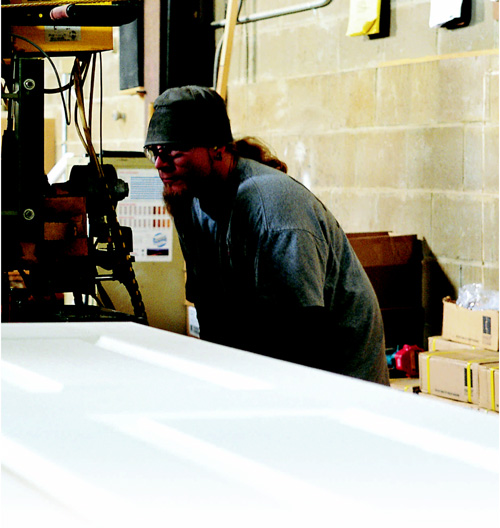By 2004, Bradco’s number of branches had more than doubled, from 52 locations and $476 million in sales at the end of 1997 to 109 locations and $995 million in sales in 2003.
The Road to New Markets Concerned about maintaining adequate control over operations as the company grew, the Segals concentrated their purchases no farther west than Texas until October 2003, when they opened their first branch in Arizona to begin capturing lucrative residential markets in Phoenix. Bradco now is looking for opportunities to expand in Arizona and California to give the company coast-to-coast operations. The Segals estimate they’ll open eight to 12 new branches a year for the foreseeable future.
Deciding where to locate new branches is a combination of strategy and serendipity. For new markets, the company looks closely at housing starts, population figures, and the number of competitors in the market, focusing particularly on the top 50 housing markets where national production builders have divisions. Active housing markets mean not only steady work in residential construction, but also in schools, shopping centers, and offices to serve the families living there. Once a branch is established and performing well, they look for other nearby spots so the stores can support each other. “It doesn’t work well to have an island,” Segal explains.
Just as often, though, a new branch is a result of an opportunity that’s too good to pass up. That was the case with the Phoenix branch, Segal says. The manager came to them from a competitor, and had extensive contacts with roofing contractors in the region. Plus, Phoenix is the second-largest housing market in the country with more than 46,000 housing permits pulled in 2003, according to BUILDER magazine, a sister publication of PROSALES.
Not all acquisition efforts hit the bull’seye. For example, Bradco’s efforts to purchase Vernon Hills, Ill.–based Wickes Lumber (which began in 2002 when Barry Segal identified the company’s stock as undervalued and began buying it) did not pan out. In April 2003, he made an offer for a complete purchase of the company, which was rejected. Nine months later, Wickes filed for Chapter 11 bankruptcy and the Segals say they are no longer interested in a deal.
Even without bringing Wickes into the fold, there is plenty on the plate to keep everyone at Bradco busy. “My goal for the branches is to be No. 1 or No. 2 in the market,” Barry Segal says. “We want to expand in markets where we are strong. At the same time, we want to build smaller markets to that same level.” Barry Segal says he sees Bradco maintaining its 12 to 13 percent annual growth through the next five years. They’ll do that, he says, by opening new branches and growing their sales volume with the addition of new products, particularly more high-end roofing materials.
Internal Strategies for External Growth While specializing in roofing means a smaller group of product lines to purchase from, Kubicka says it doesn’t reduce the number of SKUs because he’s buying deeper within each line. To help keep inventory manageable, like many other specialty dealers, Bradco is looking to consolidate vendors and SKUs to improve pricing, purchasing power, and inventory turns, and to develop consistent sales and marketing support nationwide. But with constantly opening new branches, that’s a tough assignment. “We allow a lot of autonomy at the branches,” he says. “We don’t tell them what to buy. There’s enough pressure on them starting up to find the sales. It’s easier to … sell someone what they need than to convince them to buy something else. We let the sales lead the product and then re-evaluate later on.”
Company-wide, Bradco also is focusing on exterior packages that include decking and vinyl railing, which Brad Segal says offer a “huge opportunity” for growth compared to roofing and siding. “We’re expanding with contractors who do all three of those.”
To help the company manage and maintain its current level of growth, Bradco also has invested more than $10 million in a new nationwide computer network that provides e-commerce functions for customers and vendors. All the company’s executives, managers, and sales staff have remote access to the system.
Additionally, Bradco is adding key executive staff—including HR and marketing directors—to manage the need for more personnel and expanded marketing efforts. “I can open branches and buy trucks,” Brad Segal says. “The biggest challenge to growth is people.” Bradco’s goal is to never become too institutionalized to lose its ability to respond quickly to opportunities in the marketplace—and to inspire its employees to excel. “I want people to do well,” Barry Segal says. “We have long-term people who have been here from day one. People can make a career here. It’s a good place to work.”

